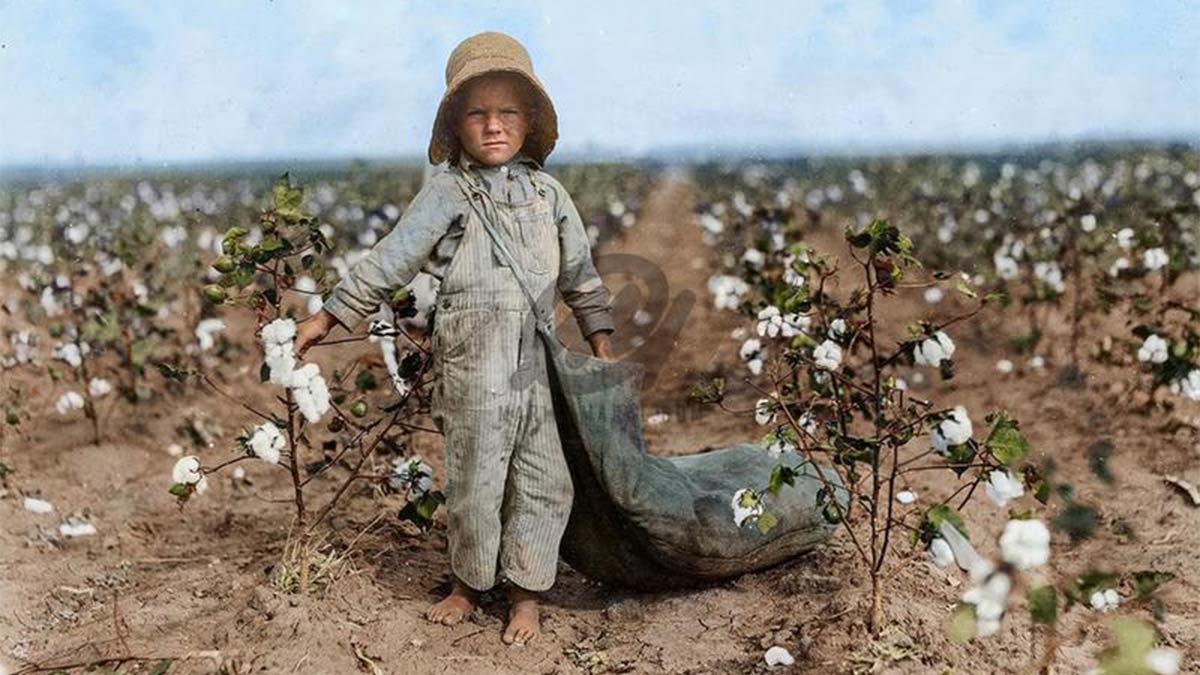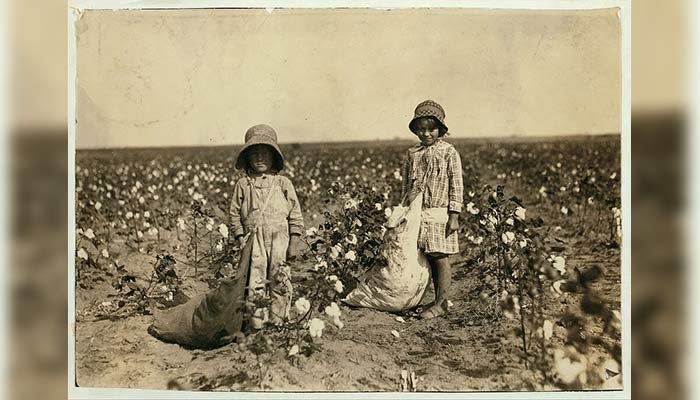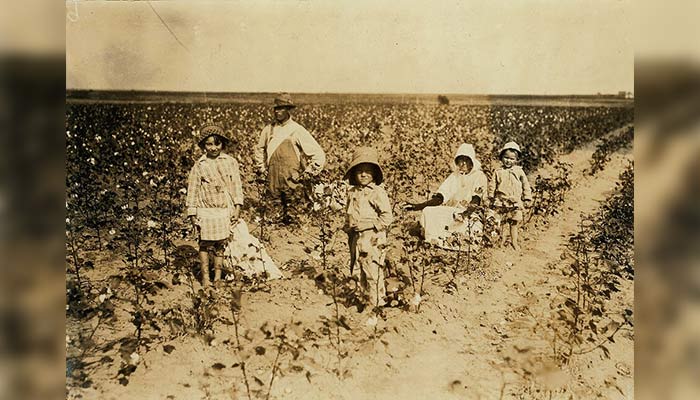
In 1916, five-year-old Harold Walker, living in Oklahoma, was captured in photographs diligently working in cotton fields. Despite the overwhelming heat, the young boy collected almost 10 kg of cotton daily, enduring the pricks of thorns.
He wouldn’t know it, nor would the photographer who took the image, but Harold would become the symbol of the hardships faced by child farm workers. He would later serve as inspiration for struggles for fair labor practices.
HAROLD WALKER: PHOTOGRAPHS THAT MADE HISTORY

The day photographer Lewis Hine captured photographs of Harold Walker and his younger brother, Jewell, alongside their family, 40 days had passed since the approval of the Keating-Owen Child Labor Act, the first federal law regulating child labor in the United States.
This law applied virtually to all manufacturing companies, factories, coal mines, and fish canneries. However, it did not address the issue of child farm workers who worked with their parents on family farms.
During his trip to Comache, Oklahoma, in 1916, Hine had worked for the National Child Labor Committee for over 8 years. His photographs were highly acclaimed and are considered one of the main reasons numerous states passed stricter child labor laws.
LAW CHANGES

It was these images that led to the creation of the federal law of 1916. Making significant progress, the National Child Labor Committee asked Hine to go to Kentucky, Oklahoma, and Colorado to report on the quality of life of children working on family and non-family farms, emphasizing safety and their attendance in schools.
The Committee aimed to establish future guidelines on how to address this issue and its evolution. Unfortunately, 2 years later, in 1918, the federal law was overturned by the United States Supreme Court, but the precedent had already been set.
Unions, stricter state laws, and increasingly modern manufacturing methods in factories resulted in a substantial decrease in child labor.
The photographs of Harold Walker and his family went down in history and were instrumental in changing its course. Perhaps, it is to that little 5-year-old boy that Americans owe their current labor laws.
